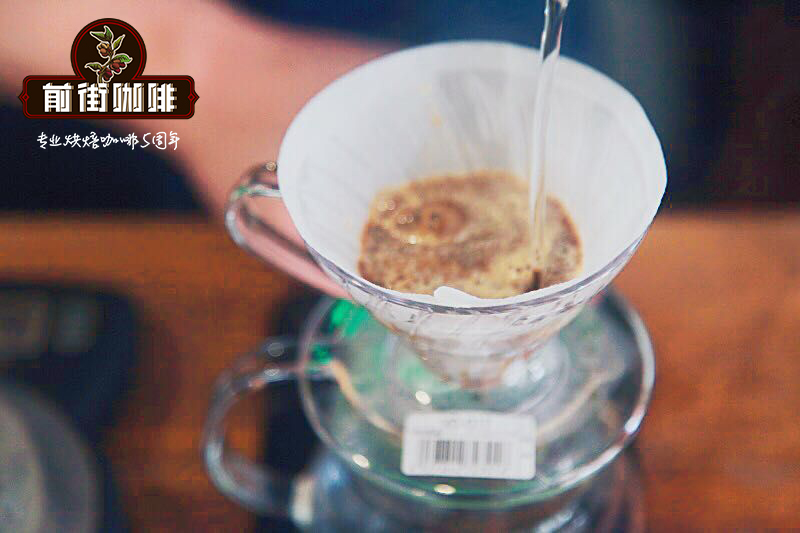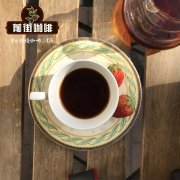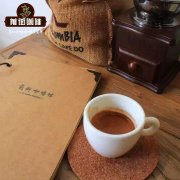Coffee beans are divided into several major types of analysis rose summer coffee is Arabica

Professional coffee knowledge exchange more coffee bean information please follow the coffee workshop (Wechat official account cafe_style)
Brief introduction of Qianjie-Coffee varieties and Rosa Coffee varieties
Arabica
Are relatively delicate, like the aristocracy, planted in the mountains between 600-2200 meters above sea level, the requirements of soil and light are extremely high. In addition, their growth cycle is also very slow, and it takes nearly five years to harvest. The ability to resist diseases and insect pests is poor, and he needs the careful care of the "housekeeper" all the time, which is very delicate. Nearly 70% of the world's commercially grown coffee is Arabica coffee, with a total of 7 million tons of roasted coffee each year.
Kanefra
Relatively common people, planted below 800 meters above sea level, have strong resistance to diseases and insect pests, do not have high requirements for the environment, do not need so much careful care, and will have a harvest in about two years after planting. The most common Kanefa bean is Robusta, which accounts for almost the rest of the market except Arabica beans, mainly produced in Java, Sumatra and Vietnam in India and the Indonesian archipelago.
Canefra is commonly known as Robusta. In fact, Robusta is only a branch of Canefra, because it is widely known, so it has become synonymous with Kanefra.
Arabica beans are long and oval in shape. The caffeine content is low, the fat is high, the sugar content (sucrose) is high, the taste is rich and mellow, fragrant and multi-layered.
Robusta is round in shape, short in stature, flat and oval, with about twice the caffeine content of Arabica beans, but lower in fat and sugar (sucrose) than Arabica beans, with a slightly bitter taste and a slight wheat flavor.
Rose summer (Geisha)
Rosa rugosa, with slightly slender fruits and leaves, is a genetic mutant of Tibica with low yield and is a very valuable variety. Characterized by strong aroma and refreshing sour taste, the taste full of personality has attracted the attention of many people.
In 2005, when the Peterson family of Bogart, Panama, entered the COP coffee competition and auctioned it, it scored a high score and broke the coffee auction record, selling for more than $20 a pound. From then on, summer rose to prominence.
There are many varieties called "Rose Summer" on the market. These varieties, which have many different genes from Panamanian Rosa, are also called Rosa, because many of them have similar geographical origins in Ethiopia.
Recent gene sequencing by the World Coffee Research Center shows that Panamanian Rosa is from T2722. This result is exactly unified. Its extremely high flavor quality is related to high altitude planting and good management. It is famous for its delicate floral, jasmine and peach-like aromas.
The spellings of Geisha and Gesha can be used interchangeably, and the translation from local language to English is not fixed.
The original variety was spelled "Geisha", a spelling that coffee researchers have used for decades, making it widely used in the coffee industry. However, it was first collected in a mountain called "gesha" in Ethiopia, whose name has been widely translated as "gesha".
Knowledge expansion: Arabica is mainly used in individual or boutique coffee. From the perspective of coffee culture or genetics, bourbon and Tibica are the two most important branches of Arabica coffee.
END
Important Notice :
前街咖啡 FrontStreet Coffee has moved to new addredd:
FrontStreet Coffee Address: 315,Donghua East Road,GuangZhou
Tel:020 38364473
- Prev

A brief introduction to the taste of Arabica coffee beans
Professional coffee knowledge exchange more coffee bean information please follow the coffee workshop (Wechat official account cafe_style) front street-Arabica coffee varieties introduction we are familiar with the two common varieties of coffee: Arabica and Robusta. The two varieties have many branches, such as the common tin card, bourbon, Kaddura, Kaduai and so on. Arabica (Arabica): flavor and aroma
- Next

What are the three varieties of coffee beans? what is the relationship between Arabica and iron pickup?
Professional coffee knowledge exchange more coffee bean information please follow the coffee workshop (Wechat official account cafe_style) front street-coffee varieties, iron pickup coffee varieties introduction Arabica Arabica beans are an important kind of commercial coffee, the result period is less than three years, with high-quality aroma and sour taste. Arabica coffee accounts for 75% or 80% of all coffee. The world is famous
Related
- Beginners will see the "Coffee pull flower" guide!
- What is the difference between ice blog purified milk and ordinary milk coffee?
- Why is the Philippines the largest producer of crops in Liberia?
- For coffee extraction, should the fine powder be retained?
- How does extracted espresso fill pressed powder? How much strength does it take to press the powder?
- How to make jasmine cold extract coffee? Is the jasmine + latte good?
- Will this little toy really make the coffee taste better? How does Lily Drip affect coffee extraction?
- Will the action of slapping the filter cup also affect coffee extraction?
- What's the difference between powder-to-water ratio and powder-to-liquid ratio?
- What is the Ethiopian local species? What does it have to do with Heirloom native species?

